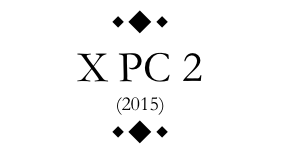 The Mezquita of Cordoba is a Roman Catholic Catedral
located in Cordoba, Spain. Mezquita is spanish word and it means “mosque.” This
well-known mosque was build in the 10th century during the rule of Abd Ar-Rahman
III, who was one of the most prominent rulers in the history of Islam. During
thismtimr, Cordoba was the largest and the wealthiest city of Europe and the
construction of the mosque added more to its majestic beauty. This bulding was
initially intended to be a church. However, when the Muslim rulers took over
the place, they started using it as a mosque and extended it until it become
the second largest mosque in entire world. The mosque is said to be the most
prominent monument in Cordoba. Once the Spanish, reclaimed the site from the
Muslims, they converted it from mosque to a church. Today, the Mezquita is used
as a church and the normal fee to visit it is 6 Euros.
The Mezquita of Cordoba is a Roman Catholic Catedral
located in Cordoba, Spain. Mezquita is spanish word and it means “mosque.” This
well-known mosque was build in the 10th century during the rule of Abd Ar-Rahman
III, who was one of the most prominent rulers in the history of Islam. During
thismtimr, Cordoba was the largest and the wealthiest city of Europe and the
construction of the mosque added more to its majestic beauty. This bulding was
initially intended to be a church. However, when the Muslim rulers took over
the place, they started using it as a mosque and extended it until it become
the second largest mosque in entire world. The mosque is said to be the most
prominent monument in Cordoba. Once the Spanish, reclaimed the site from the
Muslims, they converted it from mosque to a church. Today, the Mezquita is used
as a church and the normal fee to visit it is 6 Euros.
The
building itself was expanded over two hundred yeas. It is comprised of a large
hypostyle prayer hall, a courtyard with a fountain in the middle, an a orange
grove, a covered walkway circling the courtyard, and a minaret that is now
encased in a squared, tapered bell tower. The expensive prayer hall seems
magnified by iits repeated geometry. It is built with recycled ancient roman
colums from which sprout a striking combination of two-tiered, symmetrical
arches, formed a stone and red brick.
 The
focal point in the prayer hall is the famous horseshoe arched mihrab or prayer
niche. A mihrab is used in amosque to identify the wall that faces Mecca. This
is prctical as Muslims face toward Mecca during their daily prayers. The mihrab
in the Mezquita of Cordoba is framed by an unusually large space, the size of a
small room. Gold tesserae create a dazzling combination of dark blues, reddish
browns, yellow and golds that form intricate calligraphic bands and vegetal
motifs that adorn the arch.
The
focal point in the prayer hall is the famous horseshoe arched mihrab or prayer
niche. A mihrab is used in amosque to identify the wall that faces Mecca. This
is prctical as Muslims face toward Mecca during their daily prayers. The mihrab
in the Mezquita of Cordoba is framed by an unusually large space, the size of a
small room. Gold tesserae create a dazzling combination of dark blues, reddish
browns, yellow and golds that form intricate calligraphic bands and vegetal
motifs that adorn the arch.
The
horseshoe-style arch was common in the aechitecture of the visigoth, the people
that ruled this area after the Roman Empire collapsed and before the Umayyads
arrived. The horseshoe arch eventually spread across North Africa from Morocco
to Egypt and is an easily identified characteristic of Western Islamic
architecture.
Above
the mihrab, ia an equally dazzing dome. It is build of crisscrossing ribs that
create pointed arches all lavishly covered with gold mosaic in a radial
pattern. This astonishing building technique anticipates later Gothic rib
vaulting, though on a more modest scale. The Mezquita of Cordoba is a prime
example of the Muslim world’s ability to briliantly develop architectural
styles based on pre-existing regional traditions.
The
Tickets to the mosque can be purchased at the box office the day of the visit
to the monument. Its price is 8 € for adults, 4 € for children 10 to 14 years
and children under 10 enter for free.There are also private visits and
educational tours, night tours and guided tours. The monument's
opening hours are from November to February Monday to Saturday from 10 am to 6
pm and Sundays and religious holidays from 8.30 to10.15 am and 2 to 6 pm. The
months of March-October opening hours are Monday to Saturday from 10 am to 7 pm
and Sundays and religious holidays from 8.30 to 10.15 am and 2 to 7 pm. Cordoba can easily be reached by high speed train AVE from
Malaga, Seville and Madrid, by bus and car.


No comments:
Post a Comment